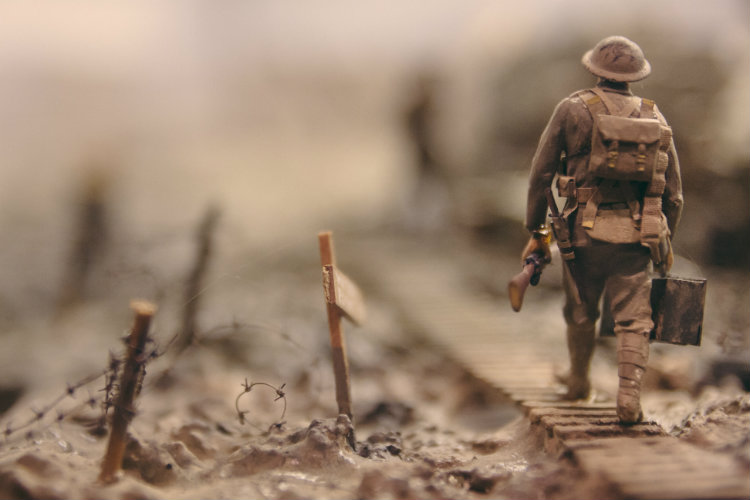Dan Sheehan’s Restless Souls | The Result is Alchemy
Restless Souls is Dan Sheehan’s debut novel and it’s a bold experiment, straddling several genres and constantly confounding the reader’s expectations. At first you think it’s going to be a war junkie’s story from the 1990s siege of Sarajevo, then a Roddy Doyle-esque vision of male friendship, then it turns into a ridiculous Californian road trip, before finally ending up in the eponymous Restless Souls, a decidedly off-beat clinic for post-traumatic stress disorder victims, run by a maverick neurologist.
But that’s not the end of the genre journey because Restless Souls, the clinic, is not what it appears to be, so the laddish heroes of the novel – Dubliners Karl and Baz – turn amateur sleuths to unearth the clinic’s mysteries making the novel’s penultimate turn a sort of sci-fi whodunnit. (The treatments in the clinic as described may well be happening now, but they feel very futuristic.)

All of that makes the novel sound like a romp when, in fact, it’s nothing of the sort. It’s asking two serious questions – how do we deal with and absorb traumatic memories and can we ever “save” our friends? Tom Dempsey returns to Dublin in 1994 after three years in Sarajevo and a stint in a psychiatric clinic in England, from which he is sprung by his two childhood friends, Karl and Baz. He has gone to Bosnia to be a witness, rather than collaborate with what he sees as the general denial of what’s going on there. It’s a vague, unformed notion; he thinks he might report from there, or work with an aid agency, or just “help out” in some way. Now he’s back but as a shadow of his former self – gaunt, silent as the grave, and wearing a piratical eye-patch (his eye has been blown out in an explosion).
“A patch of thin black felt covers what I imagine to be the tunnel to a very private room, the part of his brain that stores the worst bits of it: the shelling; the snipers: the toes and fingertips and tufts of hair poking out from the mounds of fresh rubble like spring saplings, and who the fuck knows what else,” his friend Karl observes.
The novel is told from two points of view. There is Karl, who’s desperately trying to save his friend though he feels helpless in the face of Tom’s distress, and Tom, whose memories of war-torn Sarajevo (memories that now cut him off from his erstwhile friends) are peppered throughout the novel. This structure adds internal friction as we, the readers, know more – and know it sooner – than his friends about what he’s gone through.
Karl and Baz’s plan is to bring Tom to the PTSD clinic – situated on the central coast of California within sight of Randolph Hearst’s castle – as a last-ditch effort to return him to himself. Firstly, though, they take him home to his mother. Karl notices that the clock in the Dempsey’s house doesn’t show the right time “but still ticks loudly, a metronomic knock against the wall of our mute stillness.” Karl wonders if it’s just broken, or if Mrs Dempsey has pushed the hands forward to Sarajevo time, so that she and her son “might still share something”.
These poignant moments are counterpointed with passages of pure mean comedy e.g Karl’s description of his work as a (very) casual wedding photographer: “The sulky shotgun couplings in decrepit hotels. The terrified best men necking pint after pint in the build-up to the speeches, loosening their stained ties and shuffling crumpled bits of paper back and forth. The colic-addled babies and the patter of mouthy kids racing around rickety tables, dodging cuffs from barking fathers.”
The comedy persists as the trio begin their hapless journey to the US. It’s no surprise that after they survive the turbulent, miniature-soused plane trip across the Atlantic, they get lost in their hire car coming out of Los Angeles airport and end up in the desert. Here the novel takes a surreal detour while the boys hook up with a band of hippies living in tents and a camper van out in the middle of nowhere. The hiatus in the novel’s action allows us to learn more about their history, and to understand why it’s so important for them to rescue Tom.
They belong to the generation of young Irish males who’ve grown up with the spectre of suicide hanging over them and Karl, Baz and Tom are no different. They’ve lost Gabriel, a surrogate brother to Karl, whom they all loved but whose emanations of distress they didn’t have the wherewithal to understand. Karl and Gabriel were foster kids. One of the very pleasing and unexpected tropes in their story is that their foster parents are good people. Kind, loving, non-judgemental. People who, in fact, “saved” them. But despite that, Gabriel is lost.

There’s more slapstick along the way – in particular, a white-knuckle description of a tussle in the car, as Tom, woken from a nightmare, tries to open the passenger door mid-highway (with sheer cliff drops on one side) and the others have to restrain him while driving at speed. With its movie echoes, this scene manages to be hilarious and heart-stoppingly terrifying all at once.
When the boys arrive at Restless Souls, their salty, sweary scepticism comes up against the yoga-calm, psycho-babbly ethos of the clinic to comic effect, but by the novel’s end both Karl and Baz have become actively part of Tom’s treatment, learning after all these years, how to be his friend as adults, rather than resorting to the boisterous camaraderie of their teens. (It should be said that the novel is shot through with many warm and funny memories of their 1980s youth.)
Such switches of tone from humour to tragedy are often very disconcerting, but they serve to remind us of the chasm that has grown between Karl and Baz, normal, workaday blokes with good hearts, and wounded Tom who has looked into the abyss and can’t forget it. The Karl and Baz passages in the book read like normal life brushing up against the incomprehensible horror of Tom’s trauma. What the form of the novel is saying – these two can’t ever be totally integrated, but they can live side-by-side.
There were a few implausibilties in the plot that gave me pause. Tom’s casual entry into the press corps in Sarajevo seemed a little too easy, even given the chaos of war. I also wondered why Karl, the most pragmatic of the three, would choose the very flakey-sounding Restless Souls clinic as the obvious choice for his friend’s last-chance saloon cure. Since this a novel about the restorative virtues of male bonding, it’s perhaps wrong to quibble about the women in it, but I felt particularly sorry for poor Clara, Karl’s girlfriend, who is rejected not once but monumentally twice in favour of the old boys’ network. That said, the Sarajevo sequences contain portraits of two extraordinary women whose brand of necessary heroism towers over all the characters.
This brave and intelligent novel shows how skilled Sheehan is at those nuanced mood shifts that colour all our days. He moves from the comic to the literary to the lyrical with enormous brio. The writing sings when it needs to. He’s taken huge risks with the form, but it’s paid off handsomely. The genres may collide but the result is alchemy.
Restless Souls is released on 8th February.
All welcome to the launch at the Gutter Bookshop on 7th February at 6.30pm.

